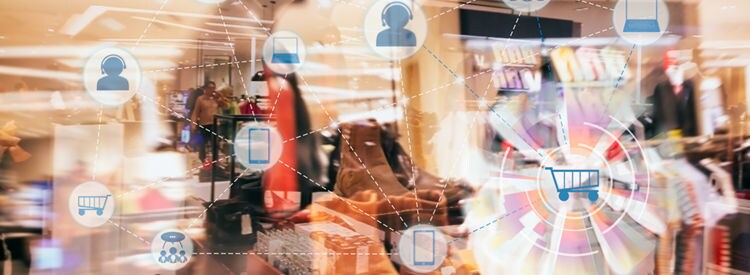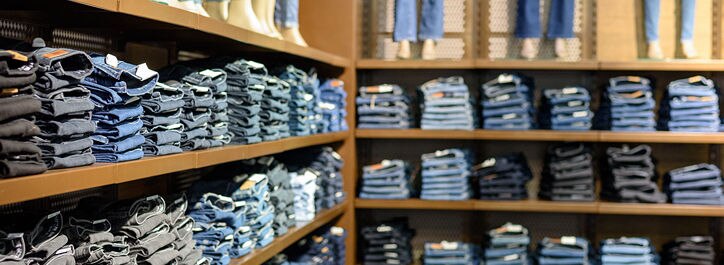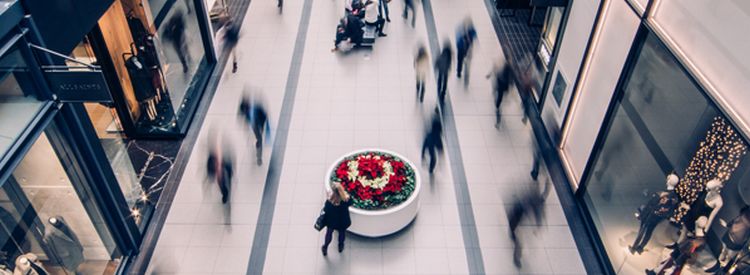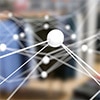Article
How IoT Solutions Help LP Know What’s in Store (and not)!

Staying on top of questionable store activity, new sources of shrink and savvy retail thieves makes it hard for retailers to find time for Loss Prevention (LP) program maintenance since they’re busy helping to protect everything and everyone in their stores. It’s particularly demanding for large companies to deal with extended store hours, many stores across regions and time zones, and the multitude of systems working across the entire enterprise that must be monitored and maintained 24/7.
Most LP solutions only provide after-the-fact reporting for reactive planning and operations. In other words, no one finds out the system is faulty until someone notices it doesn’t work, or until the signal of a pedestal has been jammed after the merchandise is gone. And, by then, the impact of the loss is typically greater than the cost associated with preventing it using smart, connected solutions.
IoT-Enabled Technology to the Rescue
To help bring real-time insights and measures to their LP program, retailers are turning to IoT-enabled solutions that can help with the job. Connected and cloud-enabled LP devices present a whole new world of opportunity to gain access to data, insights, and analytics that can give retailers the visibility they need to take preemptive action on shrink.
IoT connects people, devices, and apps through the cloud, enabling information to be passed seamlessly between devices and with associated secured networks, allowing loss prevention managers to monitor all their equipment simultaneously from a single location. Cameras and systems for each store exit, Internet-connected devices – sensors, equipment, and even store merchandise – can all be tied together to a store’s network to centralize store and system activity data and provide complete visibility down to the individual device level.
IoT is much more than connecting a network of “things;” it is an ecosystem of technologies and devices working together. The value is created by connecting devices, applications and data to produce a smart system where the whole is greater than the sum of its parts. In fact, McKinsey & Company projects that IoT solutions could deliver up to $11.1 trillion of economic value by 2025, with the retail sector accounting for $1.2 trillion[1]. That’s a huge ROI to reap from devices that essentially “speak” with other connected devices.
Speaking of connected devices – deactivators, detachers or pedestals – they can communicate with a cloud-based platform to ensure that all equipment is transmitting data and working properly. If a device is malfunctioning, not powered on or being jammed by a motivated criminal, an alert can be immediately sent to the LP team so the issue can be remedied as soon as it happens. This insight can result in less downtime, higher equipment value and a greater return on LP investments. These advanced EAS systems are also easily scalable to adapt to new challenges related to LP as the company continues to grow and expand.
Stay Connected and Focused on Shoppers rather than Shoplifters
Thanks to the connected IoT network safeguarding LP equipment, retailers can rest assured that their systems are operational, and now shift their focus to help customers and enhance their shopping experience to drive in-store sales. If the system “beeps” when a shopper passes through, staff can then act promptly and accordingly instead of dismissing and ignoring the alarm as a malfunction, which happens at times in many stores.
With a dedicated focus on the interconnectivity of IoT cloud-based technologies, LP departments can now configure multiple devices and platforms to share data and resolve shrink-related issues faster and more efficiently. This holistic approach to store and LP optimization is a winning combination to help grow the bottom line from both angles: sales revenue and loss minimization. Retailers gain valuable insights into the actions of an average shoplifter, which can be useful in predicting and preventing future loss incidents, while the company’s annual shrink percentage, well, shrinks!
Loss Prevention to Boost Customer Engagement
Successful retailers are transitioning away from more conventional methods of shrink management — such as policing and basic Electronic Article Surveillance systems — to smarter, more scalable systems that provide a direct sightline into the root causes of shrink. Many forward-thinking companies are turning to cloud-based LP technologies, empowering them to reduce and control shrink while simultaneously boosting company productivity, profitability, and customer satisfaction levels.
IoT can be the next generation of retail business optimization technologies. In the end, the benefits for retailers are that IoT should ultimately help drive sales growth, improve margins and lower costs through connected solutions, new timely insights and real-time data that streamlines operational processes and enhances the customer shopping experience.
Empowered with this never-before-accessible data, retailers can gain insights to become proactive, predictive and preventative in reducing shrink, with the technology doing all the heavy lifting. Ultimately, retailers can be confident their items are secure and put their focus where it matters – creating a memorable customer experience. Today’s IoT solutions can help LP know what’s in store (and not)!
[1] Apparel Magazine: RFID and IoT Report 2016
Explore Related Topics

Ready to see how Sensormatic Solutions can transform your bottom line?
Contact UsStay one step ahead with our articles, insights and latest news.
See more


